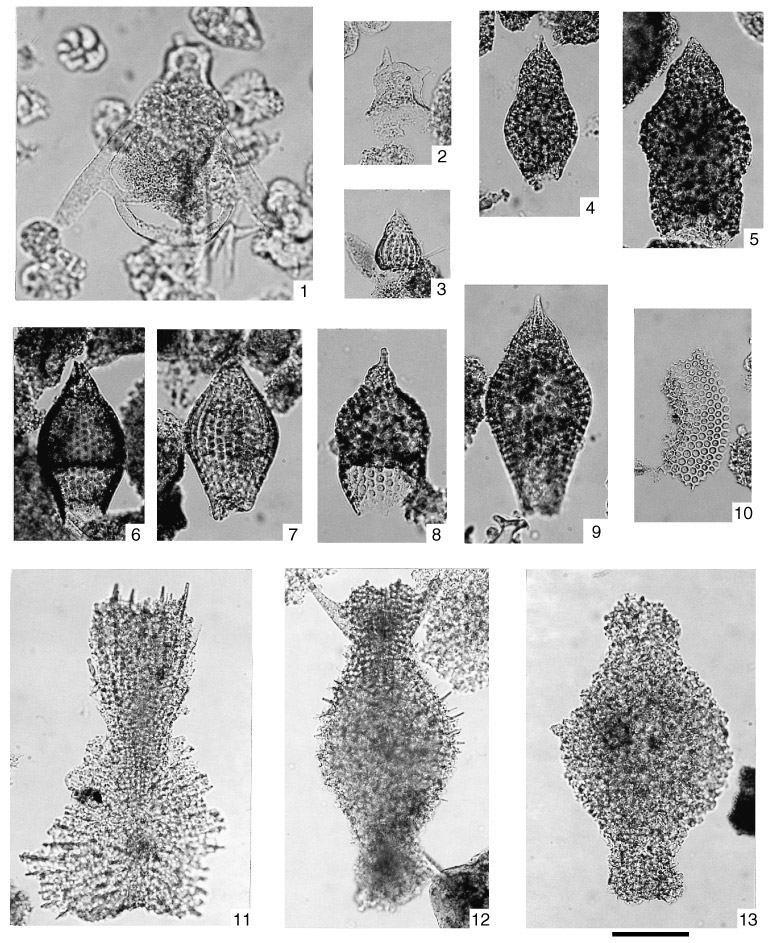Plate 3. Scale bar for figs. 1-13 = 100 Ám. Codes after sample description are slide description and England Finder coordinates, respectively. Distinctive external morphologies or features allow for identification of taxa despite various preservation problems. 1, 2. Bekoma campechensis. (1) Clay-filled and slightly corroded specimen. Note corrosion on left appendage. (2) In this assemblage most specimens belonging to the genus Bekoma are represented only by the characteristic cephalic structure. Sample 165-1001A-35R-1, 145-147 cm, sl.4 R41/4, G27/0. 3. (?) Buryella tetradica. Strongly corroded and partially infilled fragment. Sample 165-1001A-27R-3, 86-88 cm, ph.4 J9/2. 4. Phormocyrtis striata exquisita. Clay-filled specimen. Sample 165-1001A-27R-3, 86-88 cm, ph.4 O10/3. 5. Phormocyrtis cubensis. Clay-filled specimen. Sample 165-1001A-27R-3, 86-88 cm, cs.1 P37/0. 6, 7. Podocyrtis (Podocyrtis) papalis. Moderately well-preserved specimen (6) and a badly corroded one (7). Sample 165-1001A-27R-3, 86-88 cm, cs.1 S33/4, X17/2. 8. (?) Theocorys phyzella. Characteristic hyaline peristome is dissolved. Sample 165-1001A-27R-3, 86-88 cm, cs.1 N20/4. 9. Phormocyrtis turgida. Despite repeated cleanings, some clay matrix often remains attached to radiolarians. Sample 165-1001A-27R-3, 86-88 cm, cs.1 V5/4. 10. Opaline fragment of delicate radiolarian. Sample 165-1001A-27R-3, 86-88 cm, ph.1 R8/2. 11-13. Amphicraspedum murrayanum. (11, 12) = forms from the same assemblage that have undergone less diagenesis; (13) = a spongy radiolarian skeleton totally replaced by clay. Sample 165-1001A-27R-1, 108-110 cm, cs.3 U5/2, X17/3, F36/2.

![]()